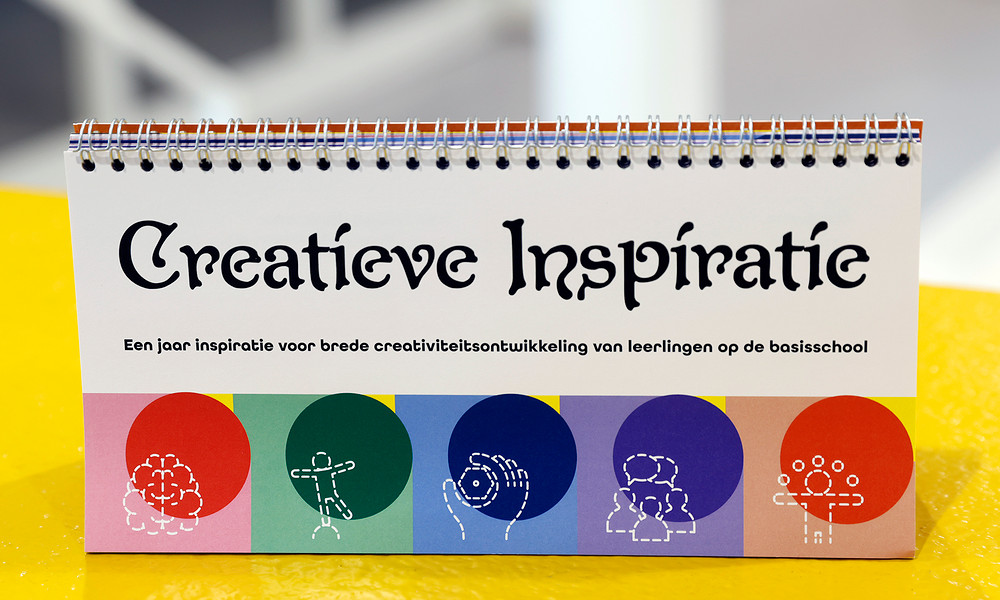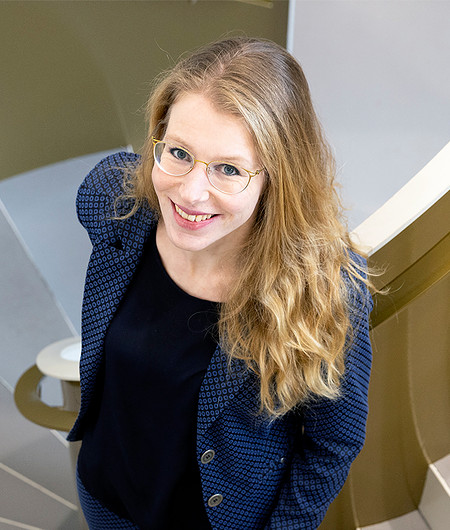Creativity with a calender
- News


Ineke Haakma and some of her colleagues conducted a literature review of creativity in elementary schools. Her research got a practical follow-up. A calendar of lesson ideas for elementary school teachers.
'Creativity is often seen as something focused on creating an original or useful product. That view also assumes that creativity mainly takes place in the mind: divergent thinking, where you think of as many different solutions as possible, and convergent thinking where you find the right solution.' Ineke Haakma is senior researcher at the professorships Arts Education and Integrated Youth Policy, in addition to being a lecturer at Minerva Academy and the Pedagogical Academy.
'I am convinced that for creativity other factors are also important. The interaction with the environment, physical factors such as movement, the materials you work with and cooperation with the other students.' According to Ineke, creativity is a socially situated process. 'The development of creativity occurs in constant interaction between individual and environment.' This alternative view of creativity also provides more starting points for promoting creativity in education. 'When I began the literature review on creativity in May 2021, I wanted to extend the research beyond the arts. Therefore, I drew up a framework that incorporates the various aspects of the broad definition of creativity. I also wanted to look not only at art subjects, but also at creativity in, for example, math and geography, and preferably cross-curricular creativity.'
Ineke began with a review of the traditional literature on divergent and convergent thinking and product-centred creativity. 'Then I supplemented the overview with what the literature writes about non-traditional elements such as body and environment, and I looked at what is still missing. In addition, I studied what is described in the literature about how to recognize creativity in children. If you have more insight into that, it offers more tools for teachers. They then know which of their students' expressions can indicate that the process of fostering creativity is going well. Finally, I looked at what the literature indicates about what teachers can do to promote creative behaviour. 'How do you see creative behaviour? How do you promote it?
When the study was finished, in mid-2022, Ineke brainstormed with a group of experts on how to translate the study's findings into teaching practice. 'Of course teachers can read the whole report, but we also wanted something they could immediately put to practical use.'
Fine Arts teacher at the Pedagogical Academy, Linda Lammers, suggested in the expert group the idea of creating an inspiration calendar with teaching materials. 'She advised us to pick up material for that at the Hanze. From teachers at the PA, former students, researchers and master students of Arts Education.' They indeed received a lot of response, so much so that they had enough material for a calendar with one lesson idea per school week. 'For each lesson idea we used the framework developed in the literature study to look at which aspects needed attention: head, body, student interaction, physical environment, divergent thinking, convergent thinking and product.' Then designer and copywriter Phebe Bakker went to work. 'She worked out the texts, and her design with fresh colours, fun photos and drawings is truly stunning. The calendar that contains all these ideas is especially striking because it can stand upright on the table. The students see it and they can leaf through it too.
One of the lesson ideas is an assignment to use transparent paint to make a window painting of a landscape. A savanna, for example. That's how you link geography to the arts. You are working with the physical environment, the classroom, the window, you are working with materials, paint, and the interaction with fellow students is crucial. One student draws a tall tree, then the next comes up with a giraffe. The first student draws a river, then the second comes up with a crocodile. That's how you inspire each other.
How satisfied are you with the information on this page?